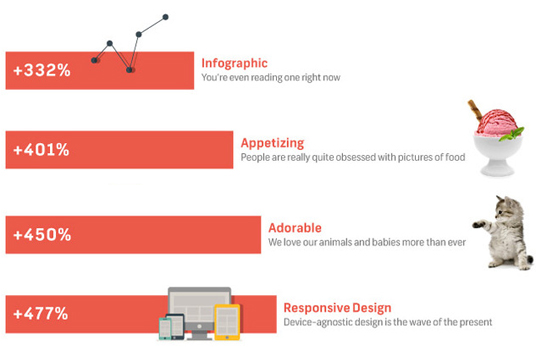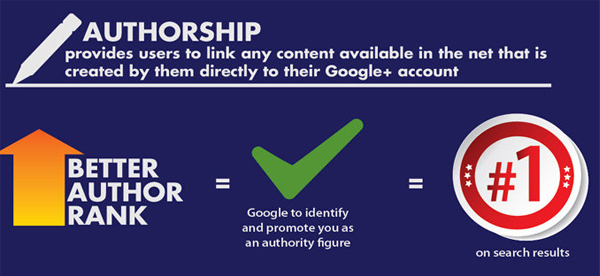This article isn’t just a “copy-paste” of an infographic that’s turned viral on the web with the trends on social networks 2014. We’ve gathered and analyzed more than a dozen of those to select the most relevant information so you can find the most remarkable of 2013 and the expectations for 2014 in only one place, including extra statistics, graphics and advice so that numbers won’t just be numbers.
It’s quite long so let’s begin already!
Quick revision: social media trends 2014 and what 2013 gave us
2013 was the year when the basis of what will be a trend in the future was established.
Let’s check out some facts that confirm this:
-
- Mobile devices will increasingly play an important role, considering more than 60% the population access social media content using them.
Extra piece of information:
In its QA report Facebook pointed out that 53% of its profit come from “mobile ads”, which “only” means 1.25 billion dollars. If Facebook does it, then why not you?
- Mobile devices will increasingly play an important role, considering more than 60% the population access social media content using them.
-
- 80-20” was established as the rule to share content. Its efficacy was proven, brands now respect it and apply it more than ever: 20% of the content must be about the brand, and 80% must be general interest information that contributes something nice to the users’ lives.
Extra piece of information:
In the same QA announcement Facebook stated its efforts will be oriented towards contextualizing and personalizing content: anything from adds to devices, formatss, content, sales, email marketing, etc.
- 80-20” was established as the rule to share content. Its efficacy was proven, brands now respect it and apply it more than ever: 20% of the content must be about the brand, and 80% must be general interest information that contributes something nice to the users’ lives.
-
- Microvideo: this type of content, will be on the same level as pictures and will become more and more popular thanks to the 15-second demonstration by Instagram and then with Vine, introduced by Twitter.
- Social Selling: sale through social networks since they are considered part of the new sales model. Since the web has turned social organizations adapted their processes so as to seize this channel and along with that comes customer service within these platforms.
Now let’s take a look at the general trends in more detail, following this infographic prepared by TalkWalker. The following aspects will be the focus of investment and attention for the marketing community:

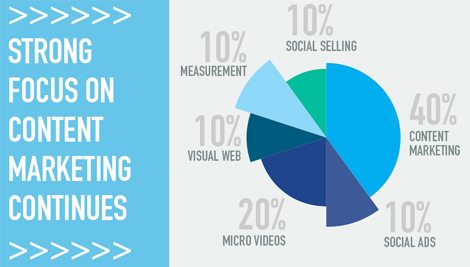
Notwithstanting these previous numbers, according to the report carried out (we’ll later go into more detail about this) by The Content Marketing Institute, companies invest in social media but still questions its effectivity which shows us there’s still a long way to go in building trust and investment in social networks. There’s no doubt we’re just getting started, it’s the beginning of an era..
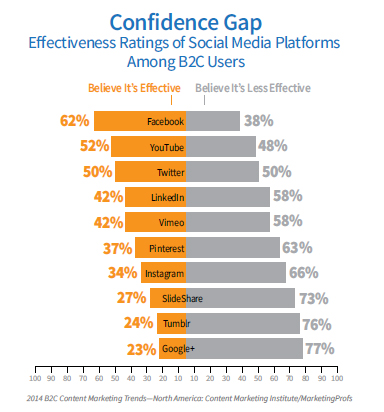
-
- 93% of marketers use social networks for business (= being on social networks is no longer an option but an obligation).
- 70% of brands are already on Google + (= it’s the main factor of any SEO strategy, if you want to be found you need to be on G+)
- 34% of marketers have been able to sell successfuly via Twitter.
- Facebook, Twitter and G+ are the most used 3 platforms for business and marketers.
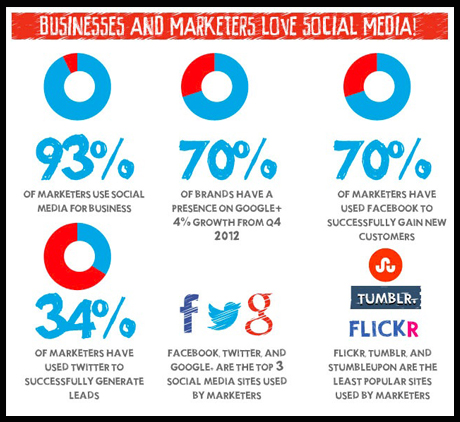
Tip: the key is to have brand advocates
-
- 70% of marketers have been successful gainingnew customers via social networks.
Extra piece of information 1: 57% of users trust more in the opinion of his/her contacts than in what the brand has got to say about its product or service.
Extra piece of information 2: 47% of social networks users state that Facebook has had a bigger impact on their decision to buy than any other social network .
- 70% of marketers have been successful gainingnew customers via social networks.
- Conclusion: you must pamper your audience so they recommend you thus influencing your close environment. This will be the best form of advertisement. Make this happen by creating contests, offers and those actions that make your followers feel it’s worth being connected to your brand.
Social media: users’ behaviour and channel’s usage
A small summary of the infographic that we’ve been analyzing by The Search Engine Journal:
In the USA the time used in social media every hour is of 15 minutes.
71% of social media users access these via mobile devices to social networks.
23% of Facebook users access their accounts, at least, 5 times a day..
Twitter grew 44% comparing it to last year, which makes it the social network with the highest growth, leaving behind Google + with 33% and Facebook is the last one on the list, as its fan base only grew 23% between 2012-2013.
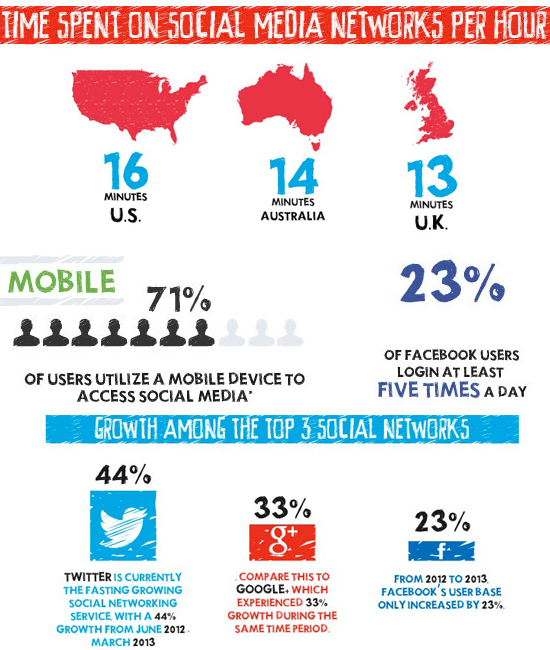
1- Content
2- Mobile devices
3- SEO
1- CONTENT: facts and trends in social netowrks.
A Custom Content Council report dating from 2013 already indicated that the budget destined to content had raised a 44 billon dollars. During 2014 it won’t be surprising to appreciate a quite important increase in investment, that being the factor around which any enterprise develops its communication strategies.
The following report issued by the Content Marketing Institute offers a detailed view of percentages, budgets and trends of content marketing for 2014, that’s why I understand it’s essential info to share with you.
Some of the numbers particularly caught my attention, those were:
- 90% of the enterprises (B2C) are using content marketing (versus last year’s 86%).
- Only 39% of the marketers have a planned and documented content strategy.
- 69% of the enterprises that present a content strategy have someone who oversees that strategy.
- 60% of the marketers plan to increase their investment in content marketing.
- Despite the content playing a key role in marketing campaign, 55% of marketers think that their campaigns are inefficient.
Content Marketing: tactics’ usage:
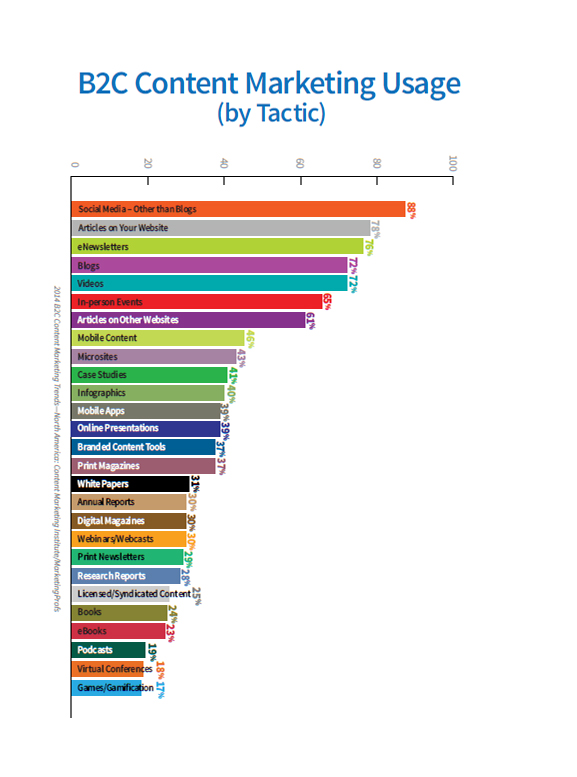
88% of the enterprises (B2C) use social media to do content marketing.
72% do blogging as a content marketing strategy.
72% include videos as a part of content marketing.
46% develop mobile content.
Most used social media distribution platforms:
Linkedin has taken a stronger place among the enterprise choices when it comes to sharing content, rising from 51% last year, to 71% registered to date.
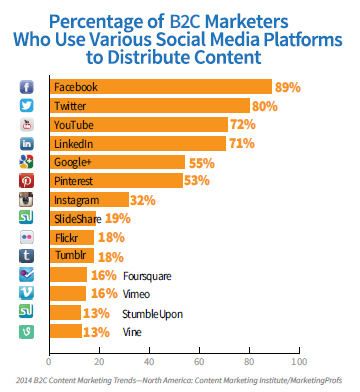
The pictures are the stars:
Some figured by Twitter:
- pictures are twitted 361% more than videos
- a picture is re-twitted 128% more than a video
- a video is faved 49% more than a picture.
- 62% of the shared pictures are related to humor
Is there any doubt about their leading role?
Uploading and sharing pictures is the most common activity on Facebook:
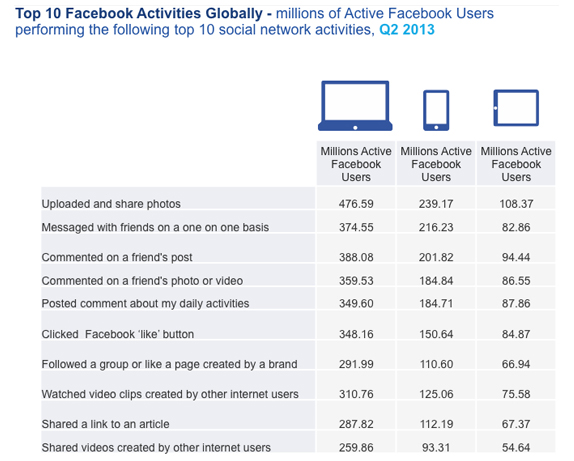
Keep in mind that if you administer one or more Twitter and Facebook accounts, and plan to increase the visual content in your strategy, you might want to use Multiupload developed by Postcron, to upload more than 300 images in just seconds, being able to schedule and program content for over a month.
Tip 1: Pictures, typography , colors and designs 2014.
Now, besides the facts that we’ve just covered, I’d like to share with you some useful information so you know how to prepare content, according to the new trends. Shutterstock (one of the biggest image banks worldwide) revealed in their annual report, which was and will be the most downloaded and searched content.
These are, to me, the main results:
flat designs had 200% more downloads, this shows that this trend is still fashionable and up-to-date
661% more searches were made about, images with an Instagram style filter.
347% increase in searches for pictures portraying persons in some real life situation, that allow an emotional bond to be created through tenderness, and simplicity.
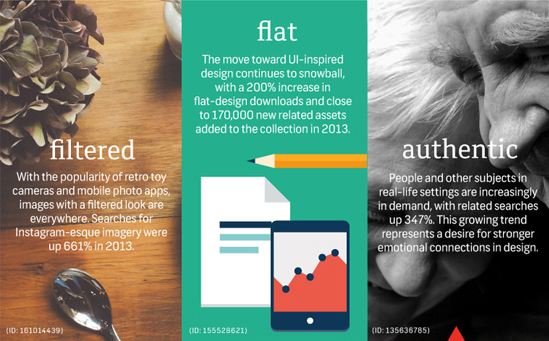
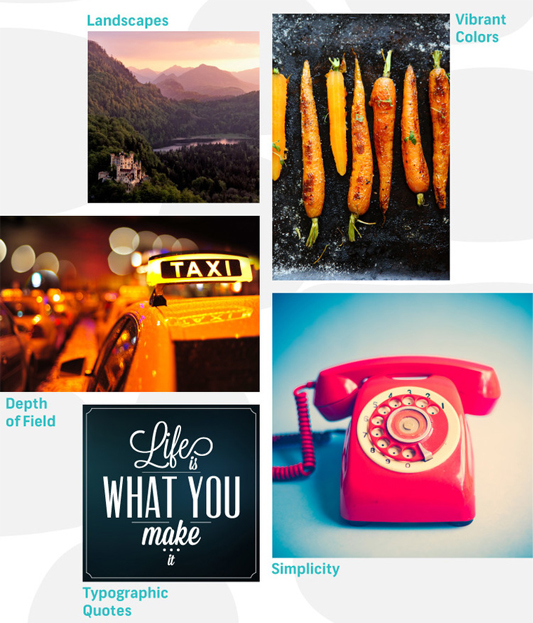
(Using this criteria you can start to plan what kind of images you might share on your pages).
Typography also plays an active role in design trends, and these font styles, have had a marked growth in download preferences:
+14% for analog style fonts
+75% for flat fonts with geometric designs
+36% for billboard “inspired” fonts, or other emblematic fonts. (Signage design)
Tip 2: Image editing tools to visually enhance your social media posts!
Don’t forget to visit the All-round Guide to cover dimensions for social networks so when you’re editing your images, you can do it according to each platform’s dimension.
- Art Studio: Is it the best option if you want to create images to share on your social networks in a few seconds with the right dimensions.
- PicMonkey: ideal to put up collages and applying quick editions to your pictures.
- Social Image Resizer Tool: perfect to adjust the size of images according to social media standards.
- BeFunky: great for a fast but still complete edition ideal. Includes filters, borders, red-eye fixing, lighting effects, etc. And the best thing is that you can do all this on your smartphone!
- Easel.ly : for infographics.
- Recite: to create quotes and transform them into appealing visual statements.
Tip 3: Hints to make your content shareable.
Info to keep in mind and profit from:
32% more predisposition is shown by users when giving positive votes to a comment if this has received likes previously. Thus, as we’ve remarked in a previous article, adding social network icons in every content or channel, whether it be emails, newsletters, blogs, etc., is vital to facilitate and influence the user to like or share the content.
61% of the shared content is about interesting stuff, and 43% is funny.. From time to time, you should share something that makes your audience laugh or something deep and emotional that moves them to tears. Please read this article, where we analyze the aspects that influence a content to make it viral
94% of the people share stuff that might uplift their lives or that of others. Before sharing, users will consider how informative and useful the content is.
Remember that with Postcron, you have access to “Recommended Content” tool, to obtain the most viral articles published on your field and the “popular people” of your preference. Know beforehand what is that that moves your audience, what kind of news do they read, and which topics caught their attention the most, so you can search, edit and share something truly relevant for them.
53% vs 34% : women share more contents than men.
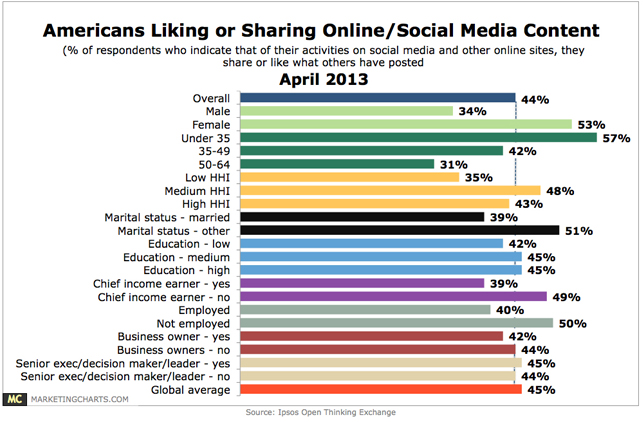
To end this section…
Blogs.
Some highlights and tips from this excellent infographic

Tip 4: Strategies for better blogging
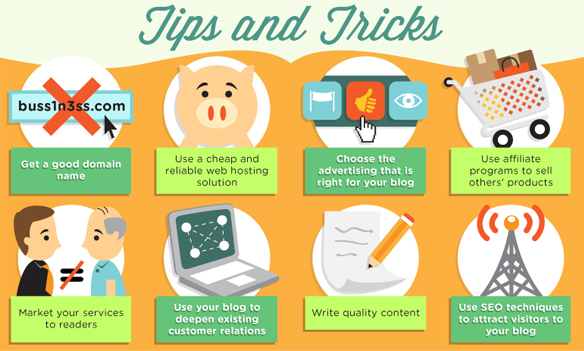
2- MOBILE DEVICES: facts and trends on social networks.
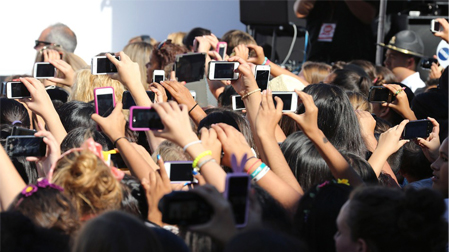
Now, let’s review some numbers:
- 94% of the marketing executives that have invested in mobile ads, considered themselves satisfied with the results of using this tactic.
- 38% vs 33% . This year there’s been an increase in the use of mobile marketing by the enterprises (B2B)
- 42.8% vs 35.5% is the estimated increase of budget in mobile devices comparing to last year.
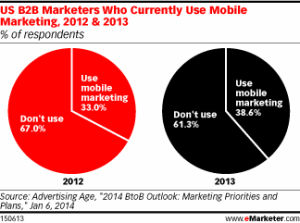
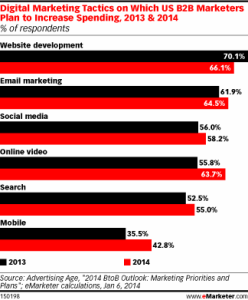
Trends:
Data from Netbiscuits:
- 4 , 3.5 , y 4.3 will be the screen sizes preferred by the users.
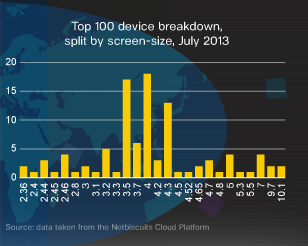
- People will acquire these products at an increasing rate because the different devices adjust to variable situations and contexts. Brands will have to adjust not only the content to produce an effective aesthetic impression but also go along with the user’s lifestyle and preferences Clients will judge the brands if these ‘details’ are missing.

- 74% of the users could develop “nomophobia”.
Nomophobia is the fear of being disconnected whether it be due to low battery, signal loss or simply losing the device itself. This dependence is prone to reach gigantic dimensions in the next few years. Hence, the success of the return of smart watches.
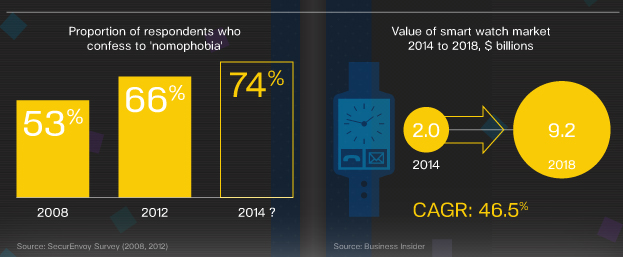
- 80% of the executives indicate that it will be fundamental to embrace digital content strategies that adapt to ‘multiscreen’. Users will punish the enterprises if they offer a poor experience because they’re looking for persistent sessions in concordance with the devices.Tip: use Google’s PageSpeed Insights, to check the downloading speed of your page
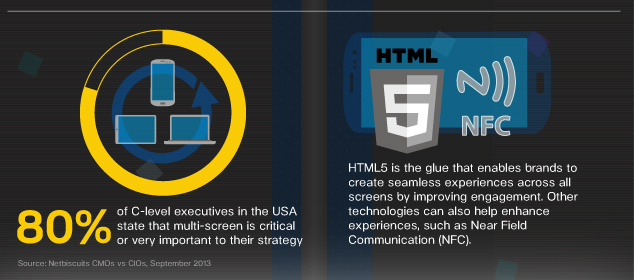
- 17.4% of traffic on the internet is explained by the use of smartphones, according to measurements up to July 2013.
- +63% of mobile phone users enter the Internet through these devices, and men use them the most. This corresponds with what we’ve seen in the previous section
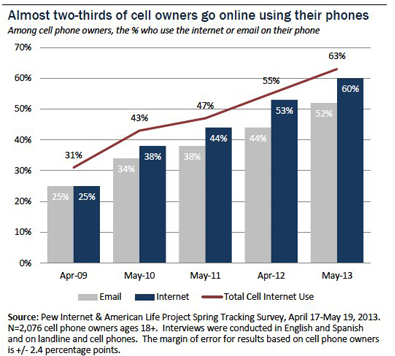
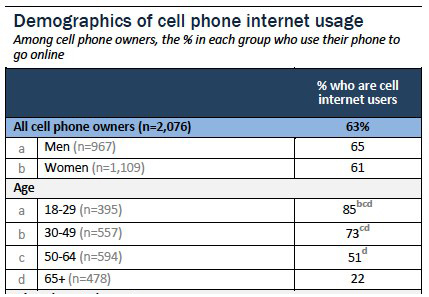
Tip 1: Use responsive design
This’d be the first step to integrating devices into your digital content strategy, and complement your SEO strategy. Why is it necessary and even convenient to use it?
1- With CSS3 is easier to develop and adapt your webpage to the standards of mobile devices.
2- The content is easy to manage: avoid having to use several pages with multiple domains, you’ll only use a group of content.
3- It’s easier to preserve the authorship’s link: As a single page is used for desktop and mobile, this keeps the author’s original link.
4- Google recommends using responsive design, and we already know that if Google says so, it’s because benefits will be available to pages that meet these criteria.
If you haven’t created your own webpage, remember that WordPress offers a wide range of templates with responsive design. Check this link with 158 options on responsive design.
3- SEO: facts and trends on social networks.
If enterprises want to maintain a certain degree of competitiveness, they must integrate the SEO to their digital marketing strategy, because search engines are and are going to be the main (however, not the only) source of traffic. That’s why Google has worked so much to improve the user’s experience through their different algorithms. This curve shows it accurately:
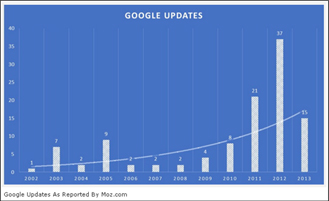
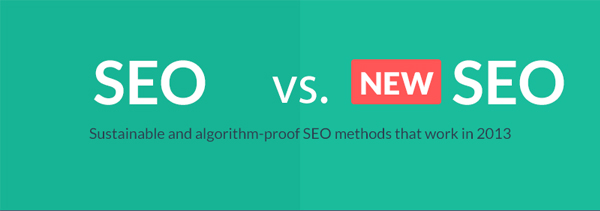
On Site

- Traffic vs Engagement:
Now: you should get the highest possible degree of engagement between the users and increase the brand’s exposition - Search engines vs Social network platforms
Now: traffic should be attracted from social networks. - Technical knowledge vs Marketing knowledge.
Now: it’s necessary to have marketing knowledge to take full advantage of SEO strategies
Content
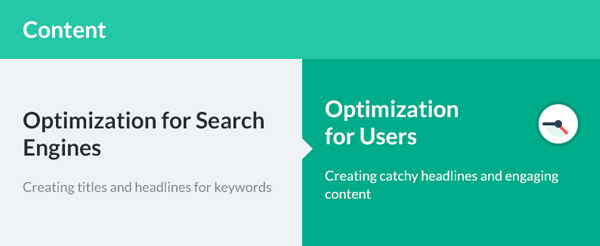
-
- Clicks&page views vs Engagement, conversation and profit:
Now: leave the content oriented to harvest clicks and go towards a more specific content that generates participation, conversation and profit.
- Clicks&page views vs Engagement, conversation and profit:
-
- Optimization for search engines vs Optimization for users
Now: Optimization of the content oriented to cover a certain keyword is now obsolete. It’s necessary to develop catchy headlines that produce engagement.
- Optimization for search engines vs Optimization for users
-
- Exact match of linked text vs various keywords
-
- Competitiveness in search engines vs Competitiveness in the blogosphere
Now: it’s not about competing just in search engines, the competition will be with sector-related blogs and industry, hence, this strategy will re-orient the efforts towards the development of content adequate to blogs and social media.
- Competitiveness in search engines vs Competitiveness in the blogosphere
- Anonymity vs Personal branding:
Now: being the brand’s face and associating the author with it, is vital to increase the influence. It’ll be a necessary tactic of the SEO strategy
Social Media

-
- Keywords vs #tags
-
- Distribution vs Communication:
Now: Using the social media universe just as a channel of distribution so that the content reaches more people is not the key anymore. The content should be uploaded to social networks to generate conversations around it.
- Distribution vs Communication:
-
- Being spoken of in other sites vs virality:
Now: brand exposure must take place via content virality and not via the introductions sites make via brand references.
- Being spoken of in other sites vs virality:
- Comments vs Community:
Now: social networks should be used to build relations and collaboration structures, not just for commenting on other blogs to get backlinks.
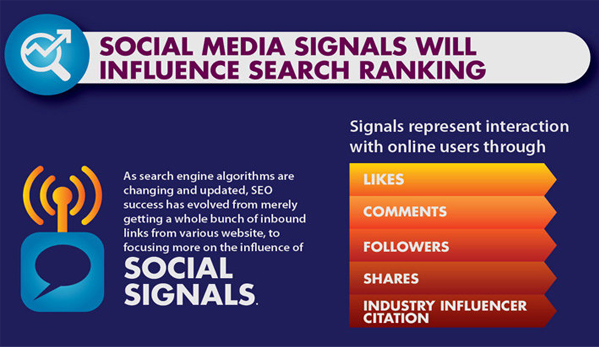
Tips: basic hints to improve SEO
1- Register and start using Google Webmaster Tool to control and check the errors that may occur on your blog or page, therefore improving the performance of your web, your content and SEO efforts.
2-Create an author link to do personal branding and winning reputation on the web. In a previous article, we’ve already indicated that results with the author’s brand receive 150% more clicks and we reviewed ways to take advantage of Google + and the usage of Authorship.
How to link your content with your profile? Check the step by step here.
3- Include keywords where they influence the most in the SEO.

SUM UP:
It’s been lots of information, and to conclude, I’m pretty sure I’m bypassing important data, but I believe that the aspects that have been highlighted in every infographic were:
A) Mobile devices: anything related to them will be something important to pay attention to and invest in. Responsive desing, custom and contextual mobile content, investment in strategies to integrate multiscreen in every possible digital marketing action.
B) Images: pictures, quotes, memes, microvideos, infographics, they’ll keep being the kings of content this year.
C) Engagement: it’ll be the aspect around which all the efforts are organized, whether it is to develop content, to SEO strategies, or to the use of mobile devices.
Wooow!! You’ve read it all!! ¡Thanks! Now, since you’ve made such a journey, I hope you’ll leave a comment. 🙂
